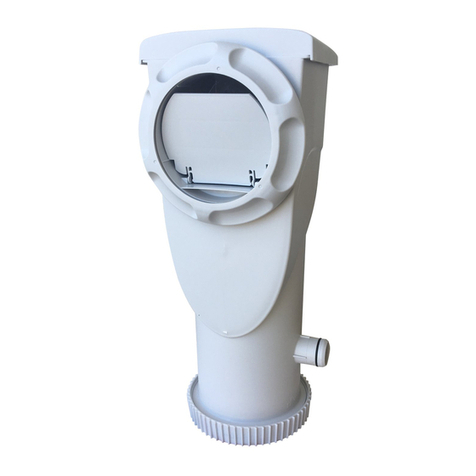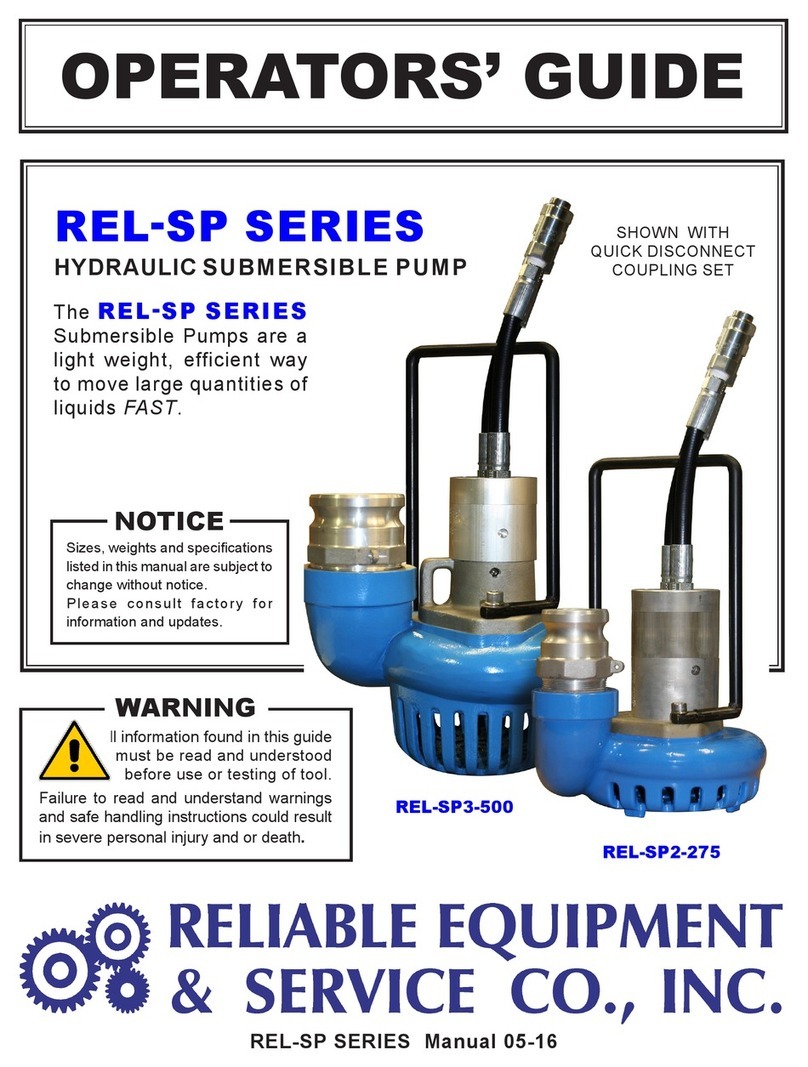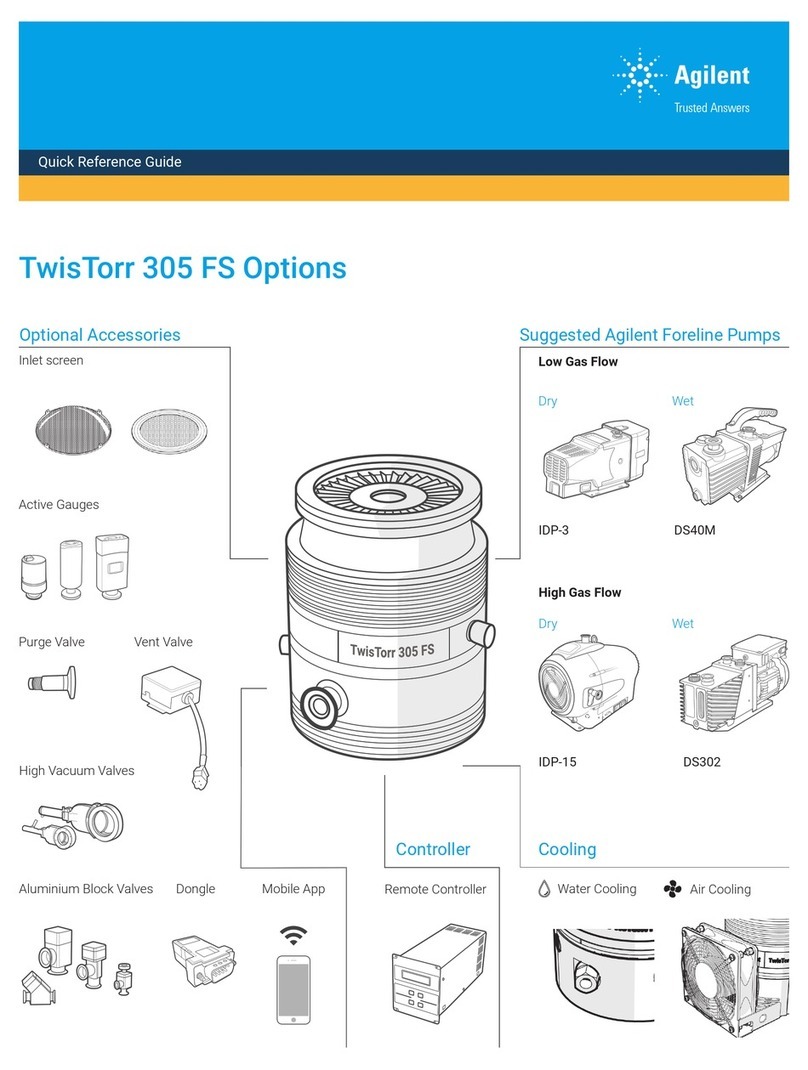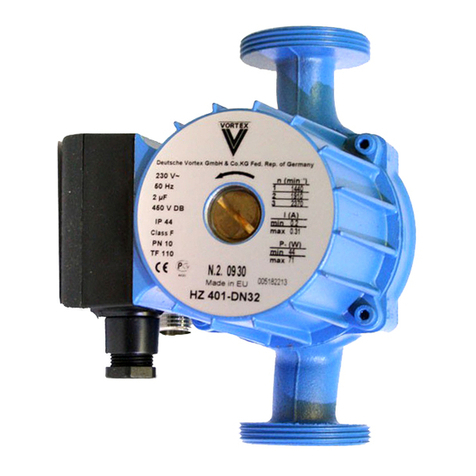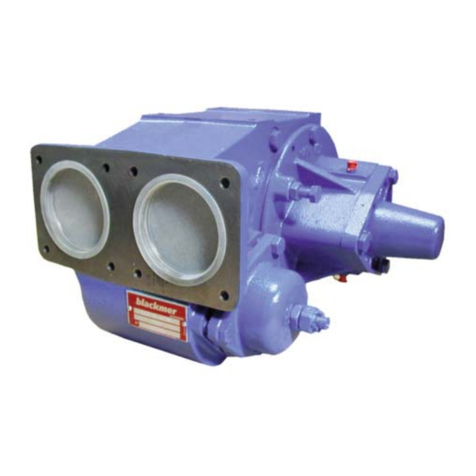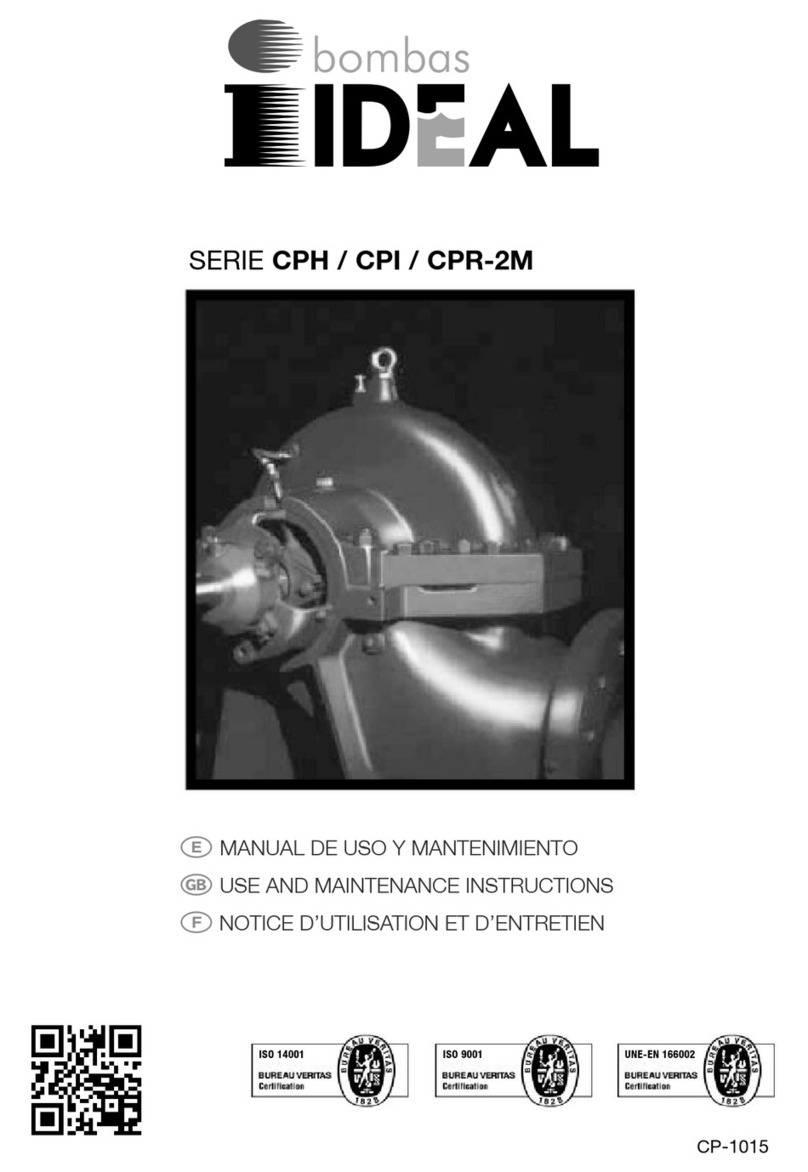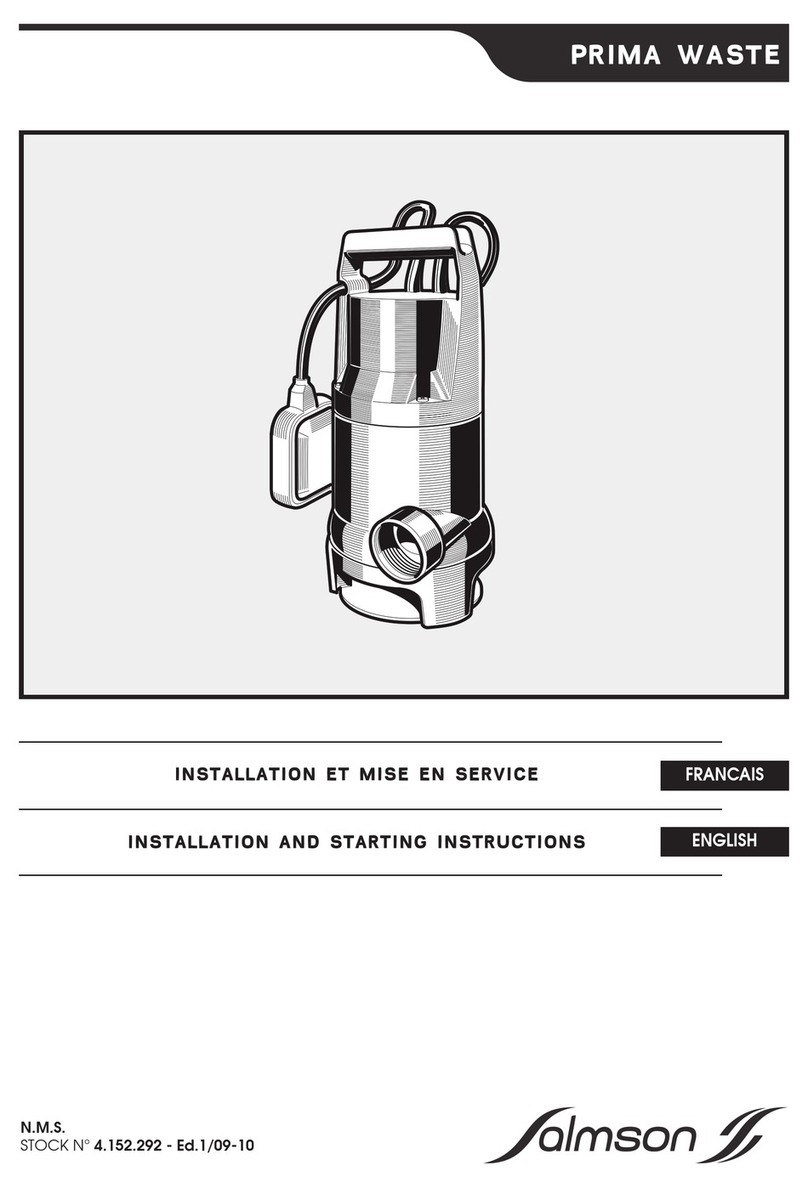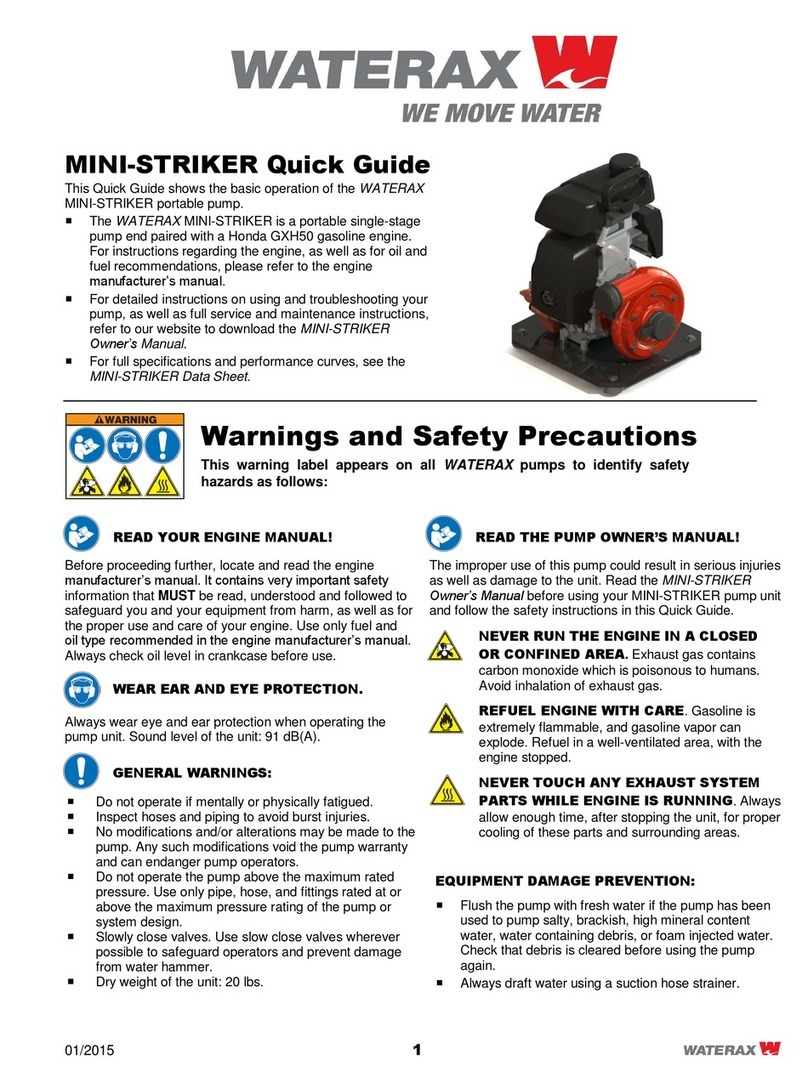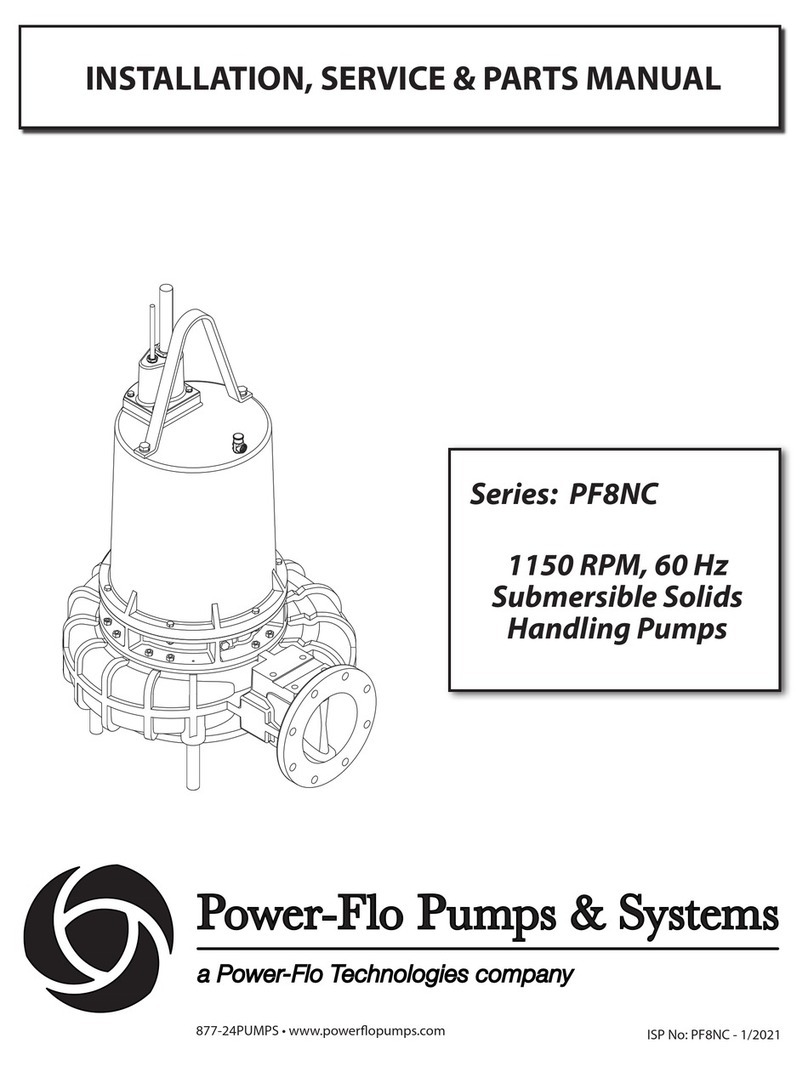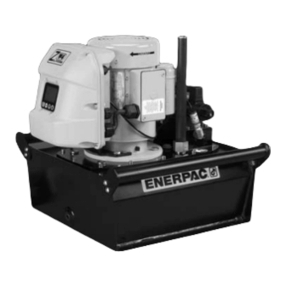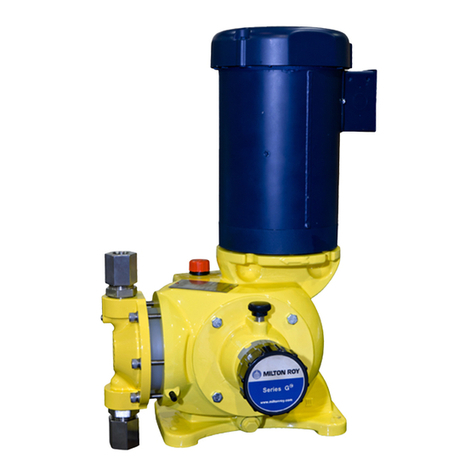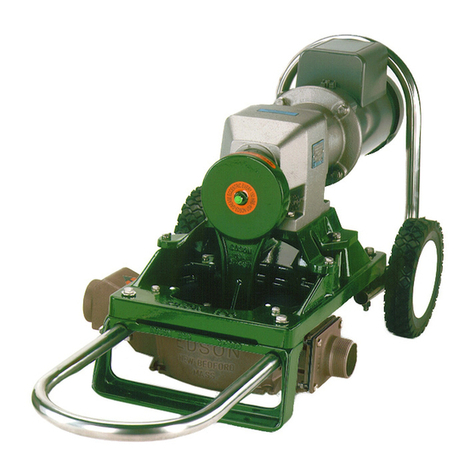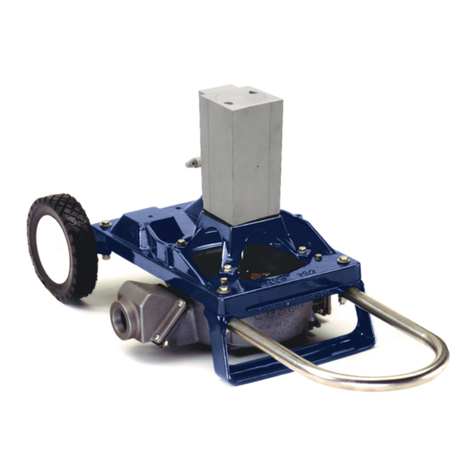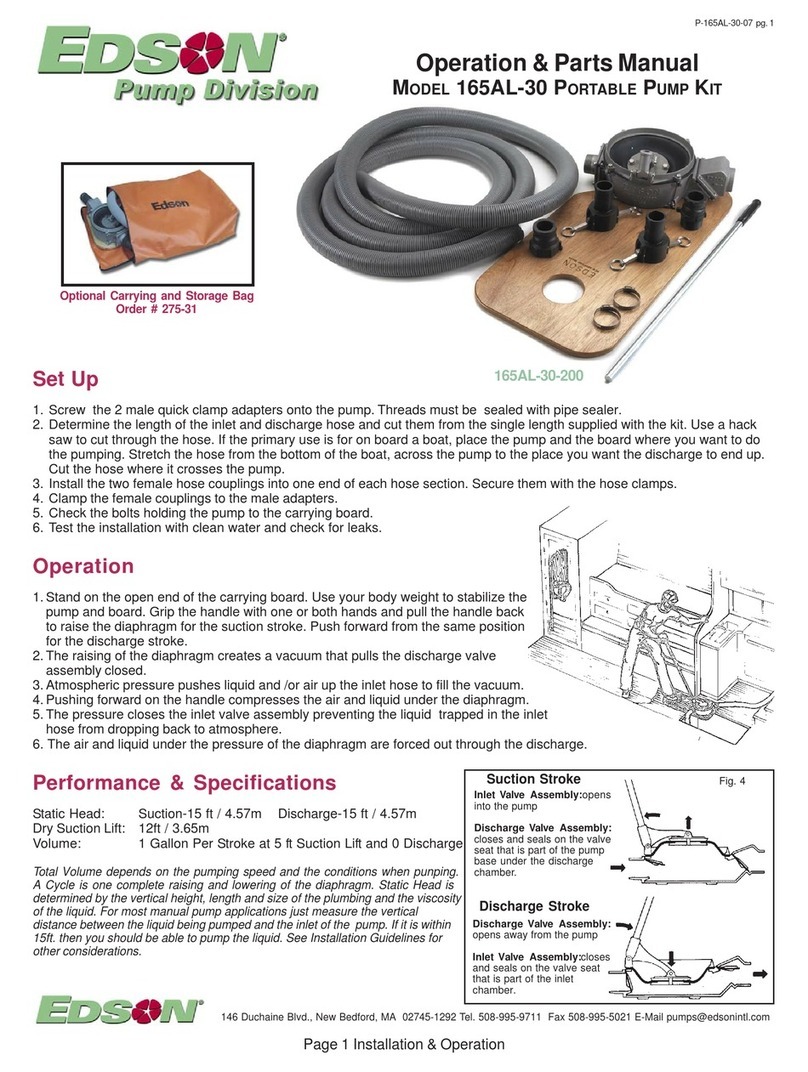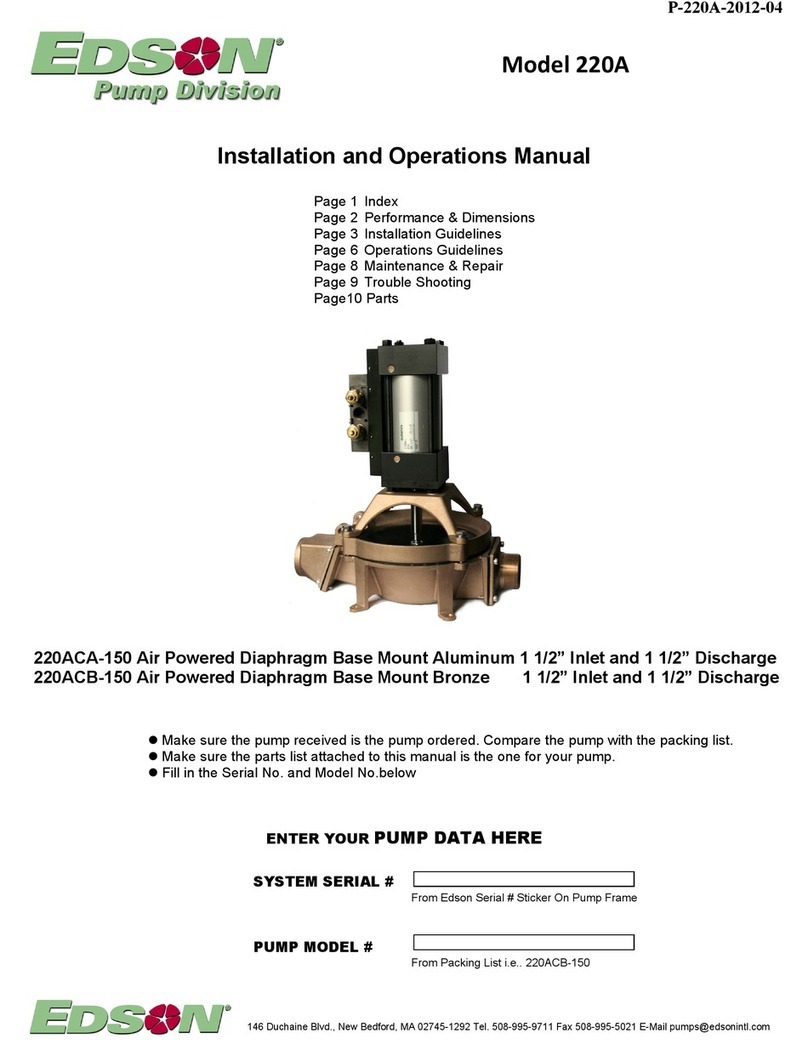
146 DUCHAINE BLVD., NEW BEDFORD, MA. 02745-1292 TEL. 508-995-9711 FAX 508-995-5021 E-MAIL pumps@edsonintl.com
Volume Test -Tests overall performance of the pump installation.
1.Use a container with a known capacity of at least 2 gallons.
2.Empty the container using the suction side of the pump or fill it from the discharge.
When using the fill test make sure the pump is fully primed before filling the container.
3.Use a watch to record the time it takes. Repeat the test at least twice.
4.Establish GPM rate. Example 1: It took 7 seconds to fill a 2 gallon container. The
GPM rate is 17 Gallons Per Minute.(60 seconds divided by 7 seconds times 2 gal.)
Example 2: It took 35 seconds to empty a 2 gallon container. The GPM rate is 3.4
Gallons Per Minute.(60 seconds divided by 35 seconds times 2 gal.)
5.Record the cycle speed of the pump. Know the head conditions of your test and
comparethe results of yourtestwith the volumeofthe appropriate Volume Chart
on page 2. Every installation is different so use the charts as a guideline.
6.Example 1: The “fill test” at 17 GPM. The diaphragm is going up and down at 56
cycles per minute. The pump is approximately 6 ft. above the liquid. I disconnected the
installation discharge line and replaced it with a 3 ft. length of 1.5” hose so I could do
the fill test. Using the 56 cycle per minute Volume Chart from page 2, I know that at
a suction height of 5 ft. and a discharge height of between 0 and 5 ft. I should get
approximately17 GPM. The installationis performing within theguide lines.
6.Example 2: The “empty test” at 3.4 GPM. The diaphragm is going up and down at 30
cycles per minute. The pump was approximately 5 ft. above the 2 gal. container and
the discharge line goes up 4 ft. Using the 30 cycle per minute Volume Chart from page
2, I know that at a suction height of 5 ft. and a discharge height of between 0 and 5 ft. I
shouldget approximately 5.5 GPM.Theinstallation is performing belowtheguide-
line. For help in determining why, turn toTrouble Shooting page 9.
Manual Test - Testing the pump valves and valve seats without the use of a gauge.
1.Removeallfittings from theinletand discharge of thepump.
2.Turn onthepump.
3.Putyourhand over the inlet.Ifthe discharge valve isworkingproperly, you should feela
verystrong pulsing suction. Thepulsingcoincides with the raisingandloweringofthe
diaphragm. If you do not feel any suction, do the same thing again and listen for
airbeing sucked in aroundthediaphragm. If you hearairmovement, inspect for loose
boltsorwarndiaphragm.If you hear no air movement,removethedischargechamber
andinspectthevalve assembly and valve seat.Cleanorreplacethevalve and clean or
resurfacethevalveseatasappropriate.
4.Pressyourhand over the discharge.Ifthe inlet valve issealingproperly, thepressureof
the pump down stroke should push your hand away. If it does not and the air is forced
outtheinlet remove the inletchamberand inspect the valveassemblyandvalve seat.
Cleanorreplacethevalve and clean or resurface the valve seatasappropriate.See
Maintenance/ValveAssembliespg.7
Vacuum Gauge Test - Tests the performance of the discharge valve and valve seat.
1.Attacha 5’ lengthof non-collapsing hoseor pipe witha vacuum gaugeinstalled
to the inlet of the pump. Make sure the line is completely sealed and air tight.
2.Turn on the pump and let it run till the gauge stabilizes. Record the reading.
3.Turnoffthe pump and watch thegauge.
4.Ifthe discharge is workingproperly the gaugeshould build and holdat 13” to15”hg.
Do not be concerned if the vacuum pressure slowly returns to 0 within a minute or so.
5.If you do not get any vacuum reading or if the gauge does not get to 13” hg and
drops off to 0 as soon as the pump stops, do the same thing again. Listen for air
beingsucked in around the diaphragm.Ifyou hear air movement,inspectfor loose
boltsorwarndiaphragm. If you hear no air movement,removethedischarge
chamberandinspectthevalveassemblyandvalve seat. Clean or replace the valve
andcleanorresurface the valve seat asappropriate.SeeMaintenancepg.7
P-98-220Epg. 8
Pump Performance Tests:
Page8PerformanceTest
Pressure Gauge Test - Tests the performance of the suction valve and valve seat.
1.Attach a 5’ length of non-collapsing hose or pipe with a 0 to 15 psi gauge installed
to the outlet of the pump. Make sure the line is completely sealed and air tight.
2.Turn on the pump and let it run till the gauge stabilizes. Record the reading.
3.If the suction valve is working properly the gage should build and pulse at 7 to 8 psi.
and when the pump is stopped the pressure may hold or slowly returns to 0.
4.If you do not get any pressure reading or if the gauge does not get to 4 psi and drops
off to 0 as soon as the pump stops, clean or replace the suction valve and clean or
resurfacethevalveseat as appropriate. See Maintenance/ValveAssembliespg.7



















